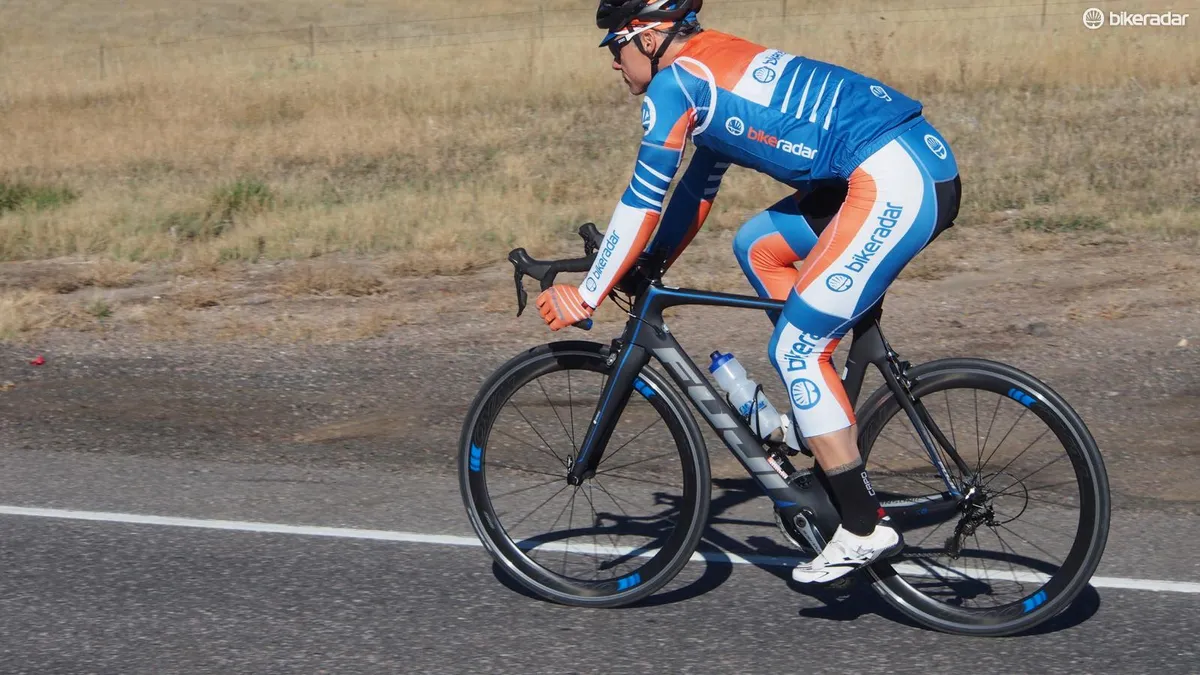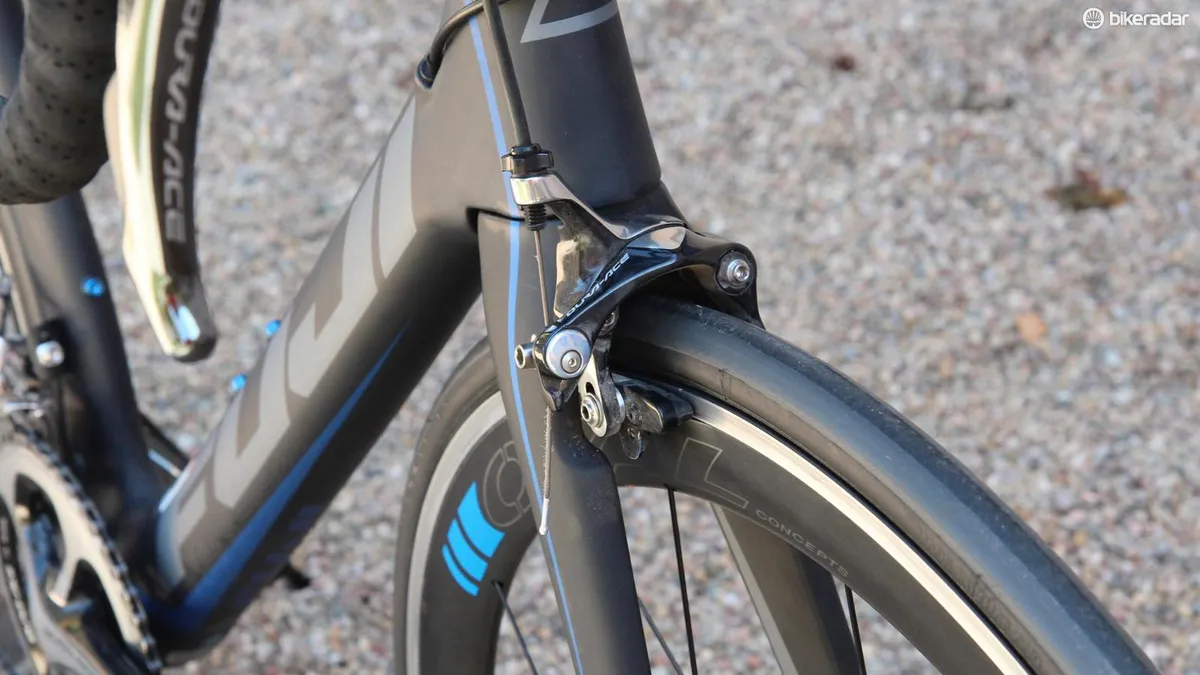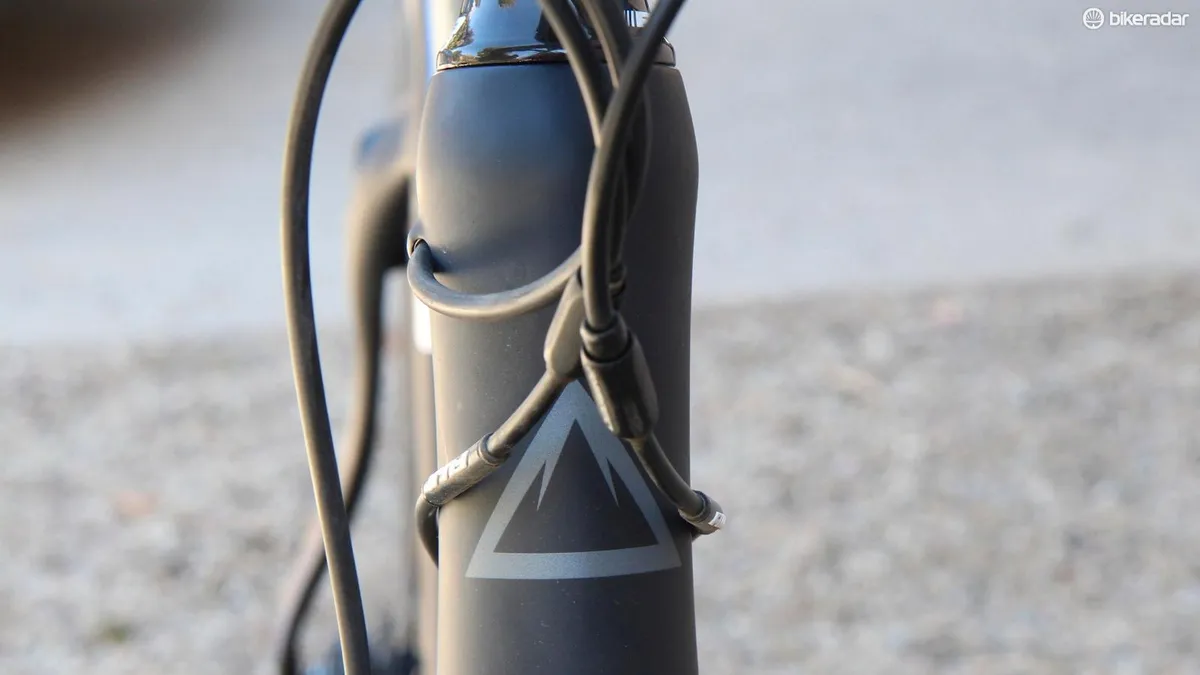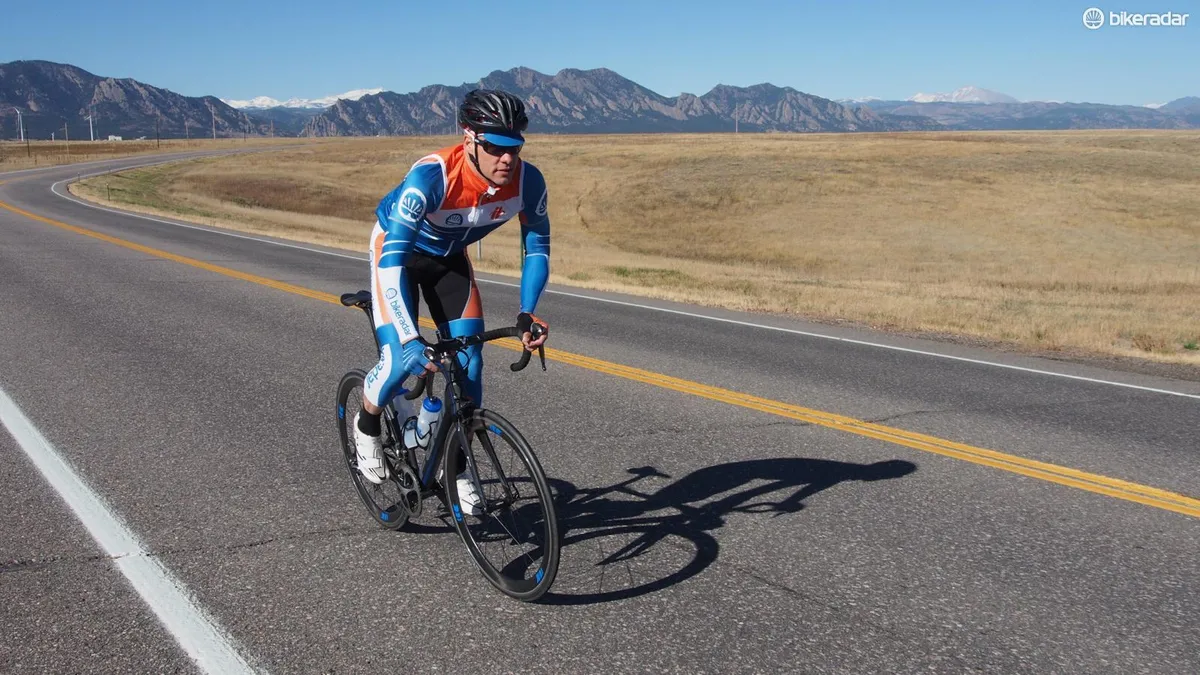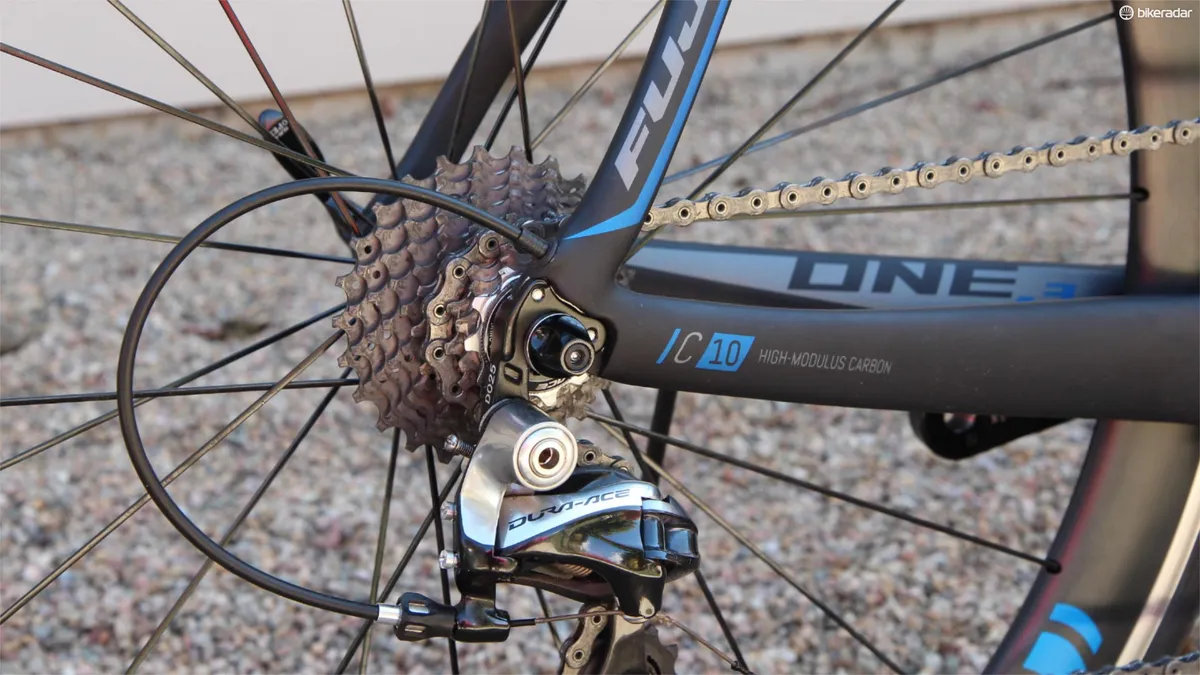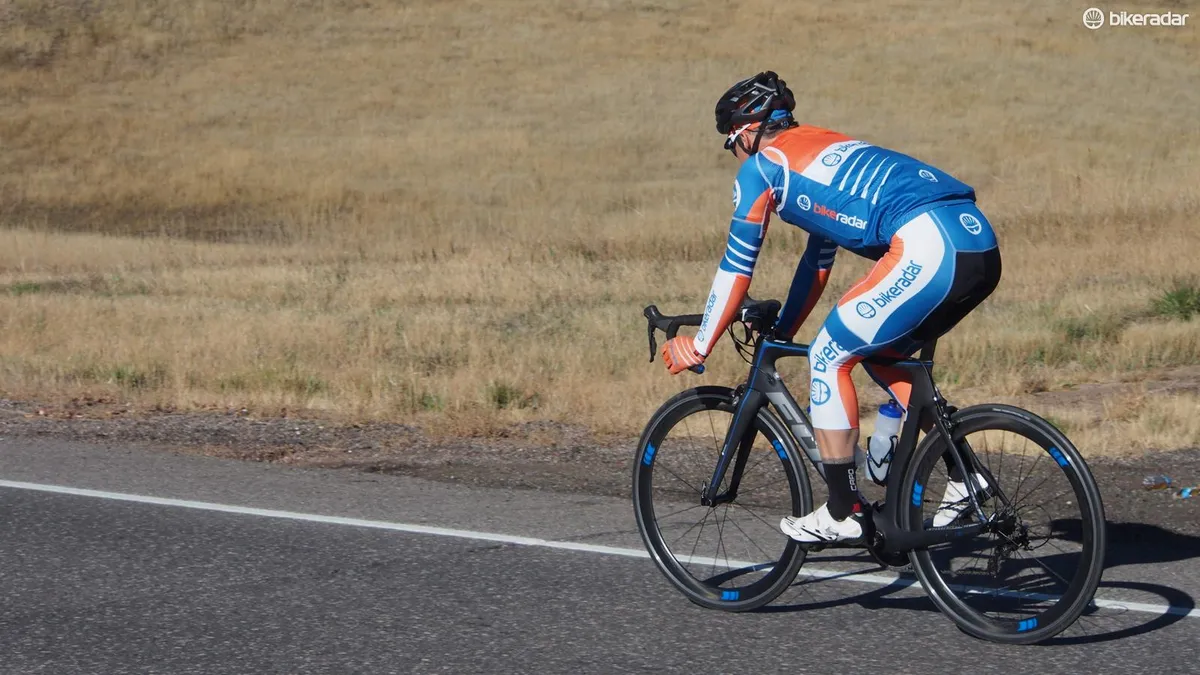Let's get right down to it: with a complete Shimano Dura-Ace 9000 group, the Fuji Transonic 1.3 is a good deal. While the use of house-brand wheels and cockpit nod to its keen pricing, the Transonic is a legitimate aero race bike. It debuted at the 2014 Tour de France with the NetApp-Endura team, and the frameset's CFD-created and wind-tunnel-tested aerodynamics are nothing to scoff at.
Best of all, the Transonic handles well out on the road. The laterally stiff frame responds eagerly to accelerations, and while the steering is nimble, the frame doesn't beat you up the way some aero models do.
BikeRadar talked to NetApp-Endura rider David de la Cruz, who rode the bike not only for the Tour's flat stages but also for the 'Paris-Roubaix' stage 5, where riders tackled many of the cobbled stages of the famed Hell of the North. Prior to the Tour, De la Cruz rode early prototypes of the Transonic, and while he liked the overall handling and feel, he requested that Fuji beef up the stiffness at the bottom bracket, which the company did. "The best weapon of this bike and probably the biggest difference with other aero bikes is the fusion between a comfortable bike and stiff when you need," De la Cruz said. Yes, he is a sponsored rider, so take his words with a grain of salt, but we do have to agree with his overall assessment.
- Highs: Price, especially in the US; aero performance with good handling and relatively comfortable ride; wide range of sizes
- Lows: Oval cockpit and saddle aren't on par with the rest of the bike; seatpost clamp on our tester made disconcerting noises while tightening
A quick note on price by region before we jump into the review: The Transonic 1.3 is a particularly good value in the US, where a Shimano Dura-Ace 9000 group starts at US$1,500. And although the UK and AU prices are higher than a simple conversion from the US price of $4,699 (£2,986 and AU$5,255, respectively), they still put the Transonic well under say, a Trek Madone with full mechanical Dura-Ace ($7,239 / £5,900 / AU$8,999). A more apples-to-apples comparison might be Giant's Propel Advanced 1, which for 2015 comes with a complete Shimano Ultegra group for US$4,800 / £3,499 / AU$4,499.
Ride and handling: quick but not brutish
We immediately enjoyed the Transonic's responsive ride. While laterally stiff at the bottom bracket and through the stout chainstays, the bike isn't overly harsh vertically like some aero frames are. Too often, frames with huge cross-sections (and aero seatposts) transmit more road impact to the saddle and handlebars than you'd like. The Transonic feels much more like a round-tubed bike. Sprints and uphill accelerations are spirited, but the bike feels sure-footed in fast corners, even on choppy surfaces. Granted, some of this comfort and confidence could be attributed to the Oval 950 wheels' generous 25mm rim width, which splays the 23c Rubino Pro Slick clinchers out to 25.5mm. Speaking of wheels, with the 50mm tall 950 wheels, crosswinds do create side pressure, but in a stable, predictable manner.
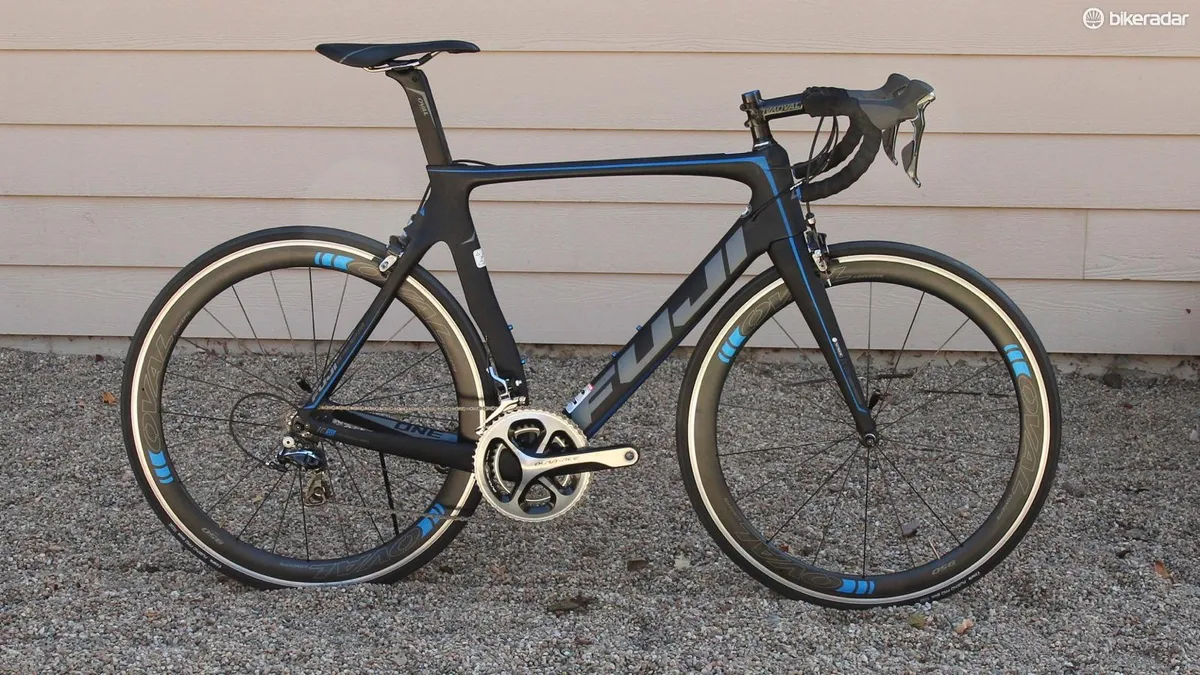
Braking is excellent. Shimano's direct mount calipers front and rear, paired with Dura-Ace levers and wide, alloy brake tracks make for the absolute best braking experience you can have this side of hydraulic road discs. It's not like Dura-Ace single-pivot calipers are floppy, but the double-anchor design of the direct mount calipers mean zero flex, excellent modulation and huge power.
In terms of numbers, the Transonic uses straightforward race geometry, with a 73-degree head angle, tight 405mm chainstays and, on our 56cm tester, a 155mm head tube.
Frame: 118g of drag (at 30mph) shaved off, Fuji claims
In construction of the frame, Fuji's engineers took many of the lessons they learned in the wind tunnel with their latest time trial bike, the Norcom Straight, and applied them to the road. The bike is substantially faster – a claimed 118g less drag at 30mph – than the company's last aero offering, the SST. Some of the aero trickery learned from the Norcom Straight include an aerodynamically contoured head tube/fork/down tube junction, seatstays sculpted around the rear brake, a wheel-hugging seat tube and an aero seatpost with integrated seat clamp. Some new aero features include full internal cable routing (Di2 compatible) and direct-mount brakes front and rear.
Compared with some other aerodynamic frames, the Transonic is designed with wider cross-sectional frame tubes for drivetrain stiffness. An example of this is seen with the enormous asymmetrical chainstays and PF30 bottom bracket for efficient transfer of power.
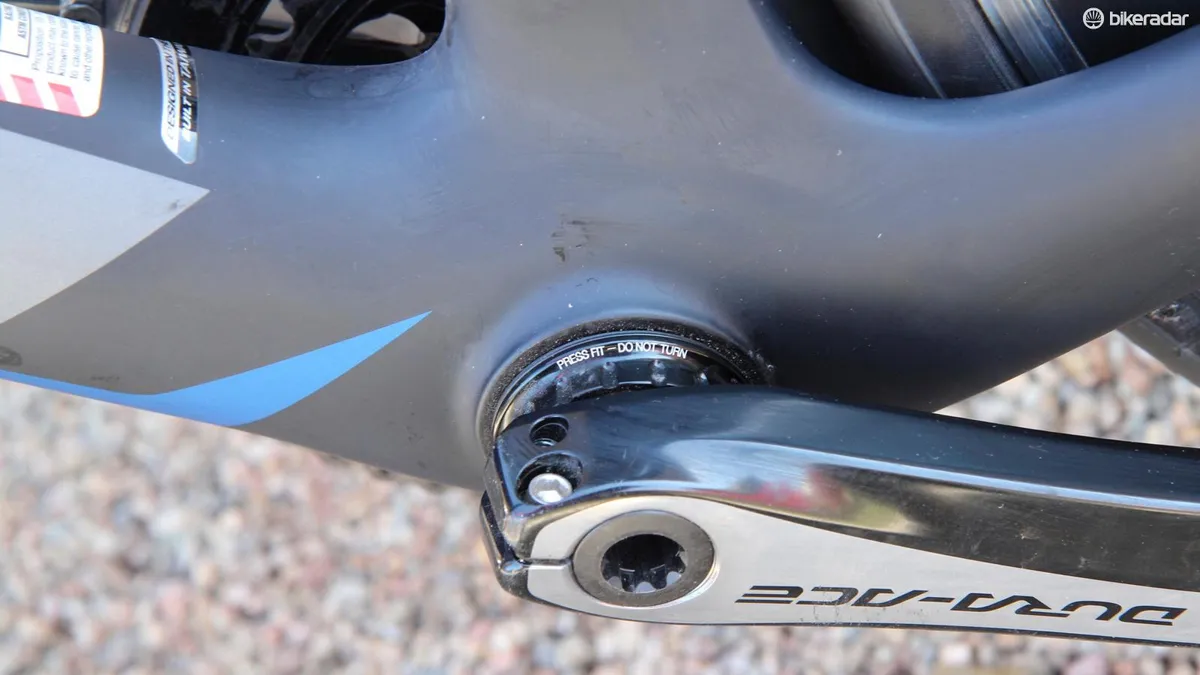
Additional frame features include an integrated chain catcher and space for 28mm width rubber and the widest of carbon racing rims.
While grams of drag have been shaved, grams of weight have not. The 56cm frame weighs 980g and the fork 370g. However, compared with a hyperlight frame, the Transonic could gain a bit of vibration damping thanks to the extra mass.
Equipment: 9000 is excellent, Oval cockpit is just okay, Oval wheels are in between
Wheels, cockpit components and saddle from house-brand Oval keep the price down, without adding too much heft to the Transonic.
But first, let's revisit the Shimano parts. While many bike companies will skimp on spec – subbing out less-obvious parts like a cassette or a chain to cut costs – Fuji goes full Dura-Ace, tip to tail. We believe Dura-Ace 9000 to be a truly excellent road group: it's historically proven more durable than SRAM's top offering, Red, and less finicky than Campagnolo's high-end groups. The full group adds great value to the bike.
The Oval handlebars, stem, seatpost and saddle aren't excellent. The carbon Oval R910 handlebars have a slight backsweep, which may or may not fit your preference. We were a little disconcerted at a tiny crunching sound the bars made when switching stems, even when tightening well under the recommend torque. The house alloy stem is unremarkable. And the Oval seatpost, like the bars, made a bit of noise when tightening. This could be due to the sandy grip added to the front of the post to prevent slippage. The two-bolt post is easy to adjust with the stock Oval R700 saddle, as you can insert a 4mm Alley key through the anatomic cut-out. If you choose to swap the saddle, you'll have to use a wrench to tighten the new saddle down. The saddle itself is fairly narrow, at about 125mm at its widest point, which comes further back (about 22mm on the 27mm saddle) than most. As a result, we had to run the saddle further forward than normal. That said, the R700 saddle is fairly comfortable once you get the position finessed.

The Oval 950F wheels are aluminum with a flexible carbon fairing. While not light by any means – we weighed the set at 1,900g (850g front, 1,050g rear, plus 60g and 63g quick releases) – the hoops deliver a decent ride.The 24-point engagement hub uses two parallel sets of three sprung pawls. This doesn't necessarily make engagement any quicker on the road than a standard 24-point hub, but it does seem to encourage the hub to reset closer to the engagement point when the wheel is off the bike. In any event, the rims are a modern 19mm internal, 25mm external width, which plumps up the Rubino clinchers to over 25mm, providing a cushy, table footprint. Aero, straight-pull spokes are used, 16 front and 24 rear.
To get Fuji's pitch on the bike, visit the Transonic microsite at www.fujibikes.com/transonic.
